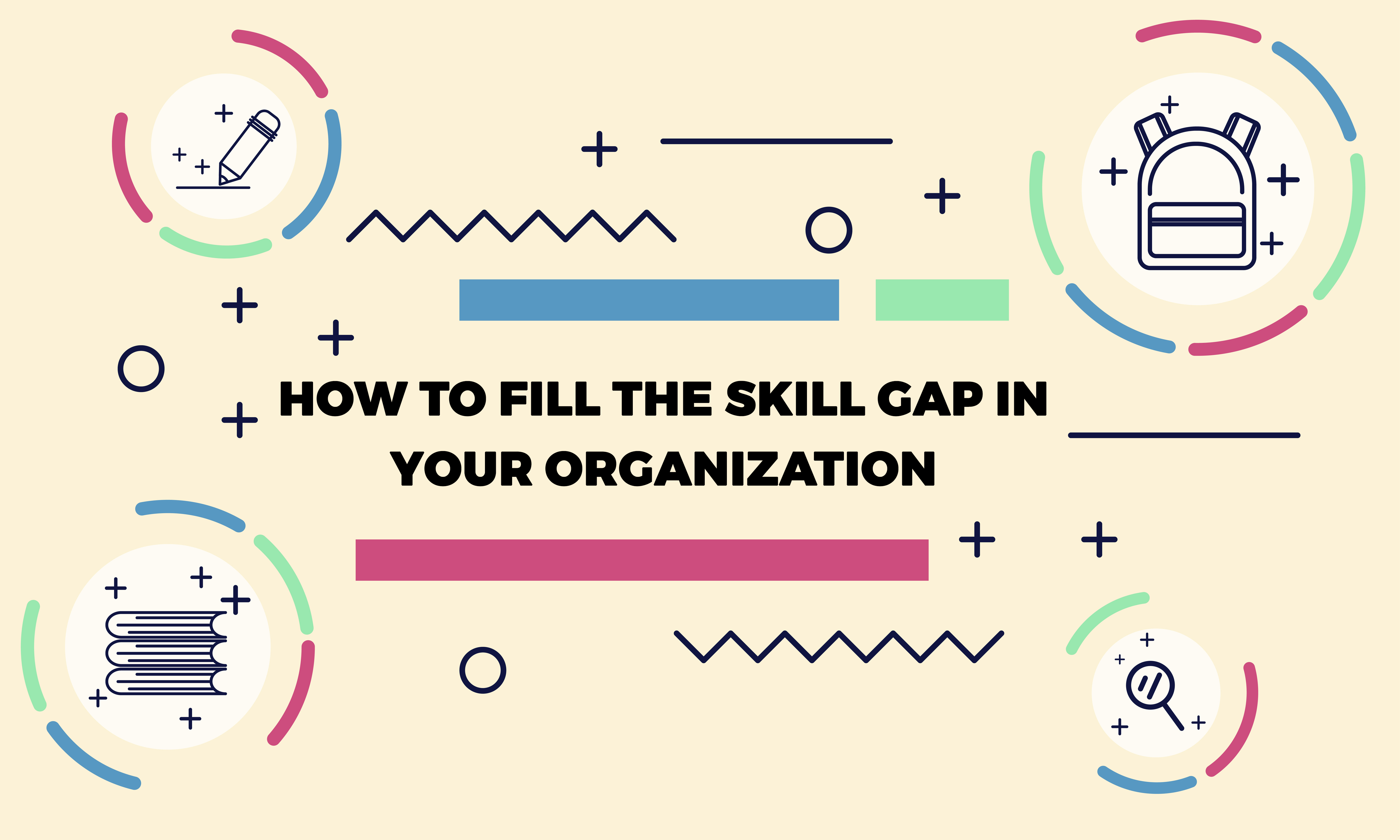
HR Manager
Modern-day workspaces are a fusion of ever-evolving technologies and constantly transforming business practices. In such a workspace, educational qualifications are never sufficient to fulfill the business needs.
Be it hard skills or soft skills, one needs to be really effective across all, to succeed in modern-day work. Every day Human resources professionals see an increasing gap in the expectations of the organization and the reality of the skills brought forward by the employees. This skill gap has been high and is only widening.
To address this skill gap, businesses need to put a foot forward and take up the initiative of making their employees unlearn and learn. Traditional practices on which the education system is built are no longer relevant.
Here are a few steps to fill the skill gap.
Building a case for Skill enhancement
Before organizations can take initiatives to fill the skill gap, they need to understand if there is a skill gap in the organization. They need to uncover the underlying problems of their organization and employees on which the re-skilling programs could be built upon. This could be attained by analyzing the assessments of results of newer program training of employees. This can be done through self-assessment tests of employees. This could be done by analyzing the success index of any new project and where did the employees got stuck or applied their new learnings.
Perform Skill mapping exercise
The first step is to analyze the current stands of employees at different grades. The idea is to identify what skills ideally are needed for the position and what skills are the employees offering. This could also be done to the repository of the newer positions that needed to be filled.
An organization should also have a plan for the future. It should be able to identify what skills will become obsolete and what skills will be needed in the future. The same analysis should also be done on the positions that organizations have, as in what work will get automated, and what work will require more of the human capital.
Most importantly this process of skill mapping is iterative and ongoing. This should never stop, and organizations need to keep a check at all times.
Identification of Learning Opportunities
This is where the closing of the skill gap starts, by creating a robust model for the learning needs of the entire organization. The key is also in the encouragement of the employees to volunteer for re-skilling. The best way to inculcate it is through the use of technology, which has the underlying advantage of being able to make the employees comfortable with technology which is the need of the hour.
Make this learning process a collaborative process, by empowering the employees to learn and re-skill collectively in a team, where they could also practice the new skills learned and be able to provide feedback to each other and the overall experience of the learning process. It helps in self-evaluation for the organizations.
The learning modules also need to be customized and personalized, as every individual will have a different need and a different learning curve. Some might adopt it easily and some might take more time. On basis of these constraints, the learning modules need to be customized.
Engaging Learning Experiences
It is a proven fact that employees who engage themselves in learning experiences have higher chances of actually accepting and learning that new skill. The idea is to keep your employees engaged in the learning processes of skills that the organization needs to invest their time in.
It could be achieved through VR lessons, gamification of learning modules, conducting quizzes, or awarding certificates on completion of the program. There is n number of ways, but the organization needs to identify which will work best for their employees.
Monitoring of Outcomes
The outcome is what every organization seeks in its initiatives. This is the most critical part of closing the skill gap, and also is a part of iterative skill gap analysis. Leaders of the organizations must create dashboards to be able to track the performance of the learning modules.
This could be also be achieved by making employees apply their new learning. If it is a soft skill like public speaking, they are being trained on, then it could be hosting a webinar where leaders could see the change. If it is the hard skill of learning any new programming language, then performance could be gauged by making employees work on a new application.
How workplace peer forums can help in closing the skill gap
It is one of the most effective ways to bridge the skill gap. All it requires is the channelization of talent already on board. The key is to utilize the strengths of every individual to help build the strengths of other employees and peers.
Every individual is good at one thing or other. Then why not utilize this talent to train other peers who are not good at that thing. Plus it also eliminates the hindrance of mobility as all the employees are under one roof. This is one activity that all human resources professionals should practice and keep their focus on in the future of workspaces.
How can overlooked Talent pools come of help in closing the Skill Gaps
If the talent gap of the organization is not getting closed by the traditional recruitment process or re-skilling programs, then comes the need to look into other talent pools that are available out there.
This could be done by hiring older workers who have a plethora of knowledge after working for decades and can add their valuable insights into the organization. They have likely undergone some sort of higher education or executive education which makes them more valuable.
It is practically observed that the organizations that hire people with disabilities have seen higher productivity rates and better revenue generation. Another great talent pool lies in the foreign workers. They are often highly skilled and come with an international perspective which can help the organization grow across borders. Another set of the talent pool is of veterans who are highly organized professionals with high acumen for management. Also, they tend to stay with the organization longer than the median employment duration.

For more Updates
Website – www.shrofile.com
Facebook page – https://www.facebook.com/shrofile/
Twitter page – https://twitter.com/shrofile
Linkedin Page – https://www.linkedin.com/company/shrofile/
YouTube Page – https://www.youtube.com/channel/UChVfJqpTjx1dHJ2xq_dMtAw
Instagram Page – https://www.instagram.com/Shrofile/



